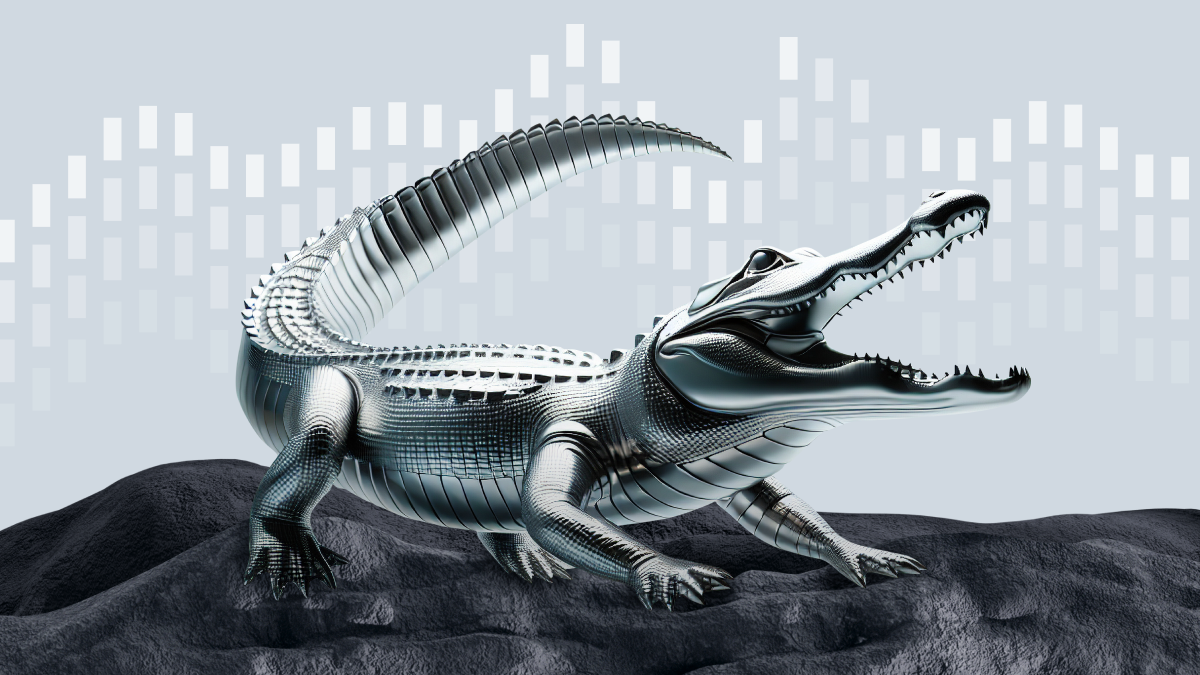
El Alligator es un indicador desarrollado por Bill Williams. Su propósito es identificar una tendencia y su dirección y filtrar las señales buenas de las malas, evitando así un mercado limitado que pueda conllevar a pérdidas.
El indicador consta de 3 Medias Móviles que se desplazan hacia el futuro:
- Mandíbula del Alligator (la línea azul) – Media Móvil suavizada de 13 períodos que se mueve 8 barras hacia el futuro.
- Dientes del Alligator (la línea roja) – Media Móvil suavizada de 8 períodos que se mueve 5 barras hacia el futuro.
- Labios del Alligator (la línea verde) – Media Móvil suavizada de 5 períodos que se mueve 3 barras hacia el futuro.
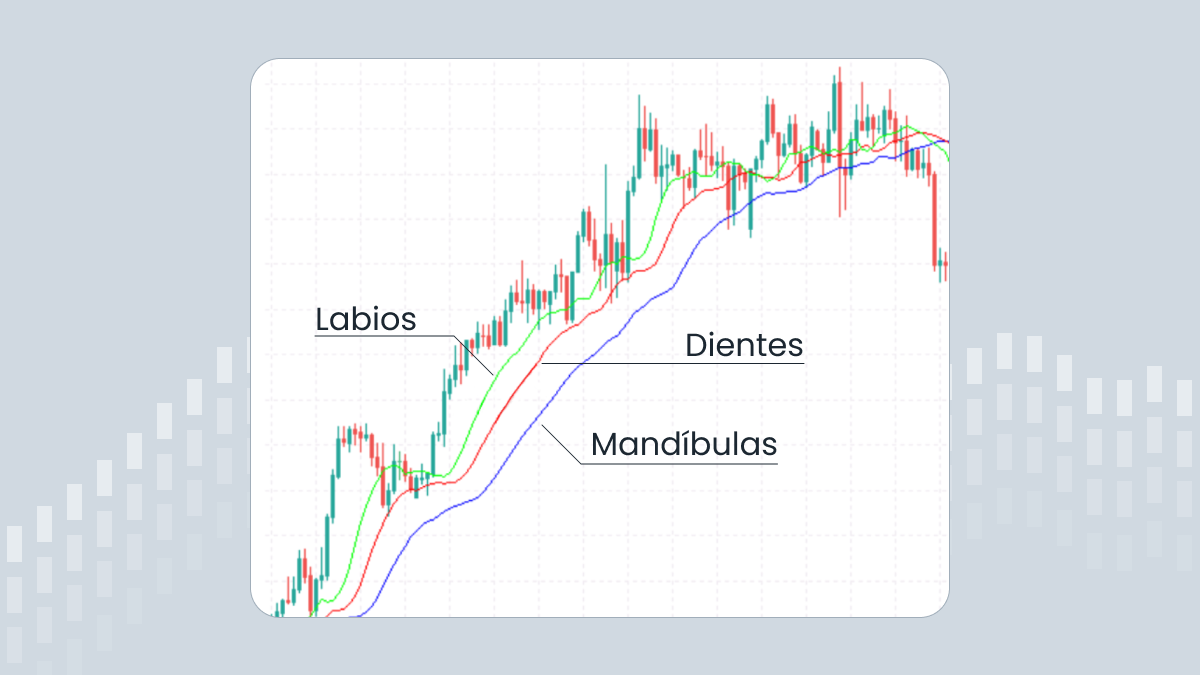
Bill Williams se refiere a éstas Medias Móviles como "líneas de balance". Se puede ver que también le dio nombres creativos al indicador y sus elementos. Su idea fue proporcionar un ejemplo que demuestre el comportamiento del mercado. Este ejemplo es el Alligator (cocodrilo) que alterna entre los períodos de sueño y caza.
Cuando la Mandíbula, los Dientes y los Labios se entrelazan, significa que el Alligator está dormido y no hay tendencia alcista o bajista en el mercado. Bill Williams recomienda mantenerse fuera del mercado durante dichos períodos. Cuanto más tiempo duerme el Alligator, más hambriento despierta. Cuando se despierta de un largo sueño, abre su boca (las Medias Móviles divergen) y se prepara para darle un gran mordisco al mercado. ¡Es hora de operar! El Alligator perseguirá el precio por largo tiempo y ofrecerá ganancias decentes al trader. Después de haber comido lo suficiente, el Alligator volverá a dormir (las Medias Móviles convergen), por lo que es el momento de obtener ganancias.
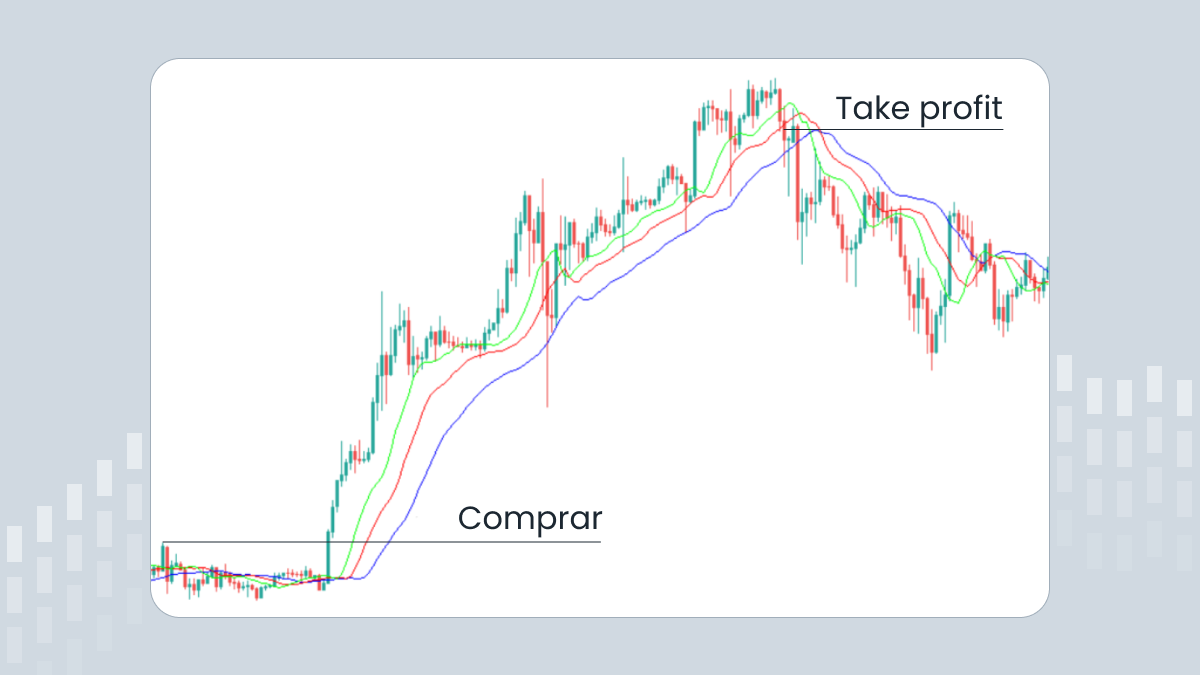
Si el Alligator no está dormido, el mercado está en una tendencia alcista o bajista.
- Si el precio está por encima de la boca del Alligator, entonces es una tendencia alcista. Las líneas del indicador toman una orden alcista (verde en la parte superior, luego roja, luego azul).
- Si el precio está por debajo de la boca del Alligator, entonces es una tendencia bajista. Las líneas del Alligator toman un orden bajista (azul en la parte superior, luego rojo, luego verde).
Las Líneas de Balance pueden proporcionar soporte/resistencia durante la fase de la tendencia. El precio puede ir más allá de la línea verde por períodos cortos de tiempo. Cuanto más intente romper la línea verde, más débil se vuelve la tendencia.
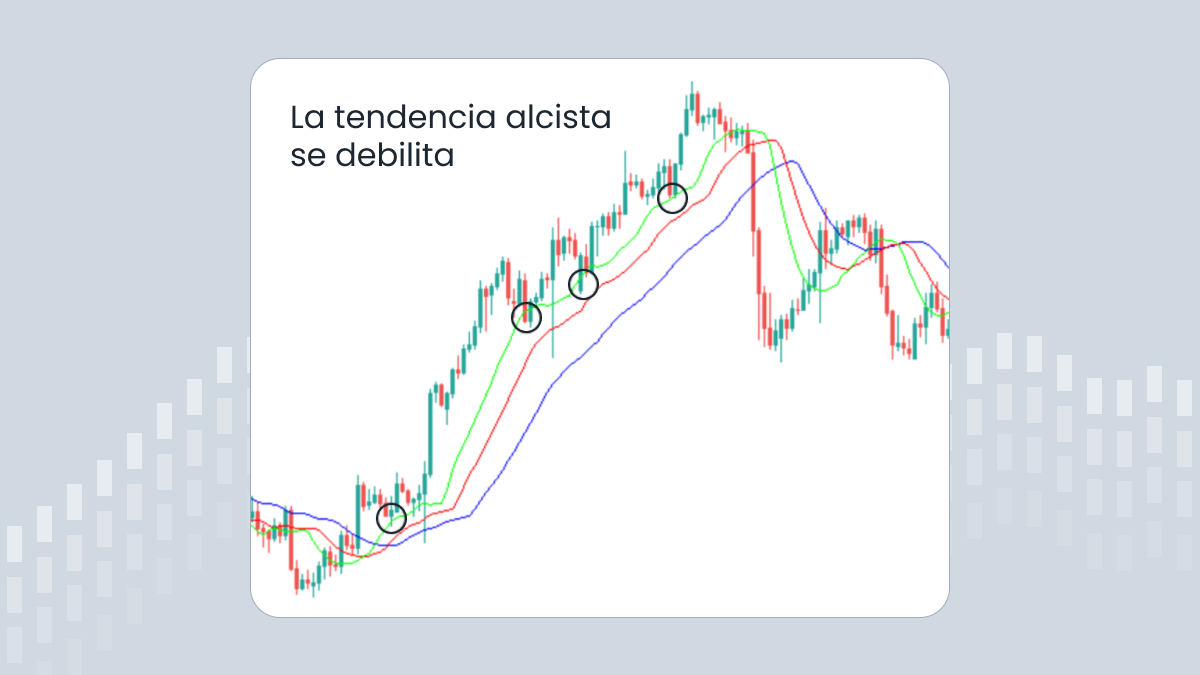
También es posible buscar los llamados “cruces falsos” o las situaciones en las que la línea verde cruza la línea roja pero luego se devuelve. Si tal cruce ocurrió durante una tendencia alcista, podrás comprar una vez que la línea verde regrese por encima de la roja.
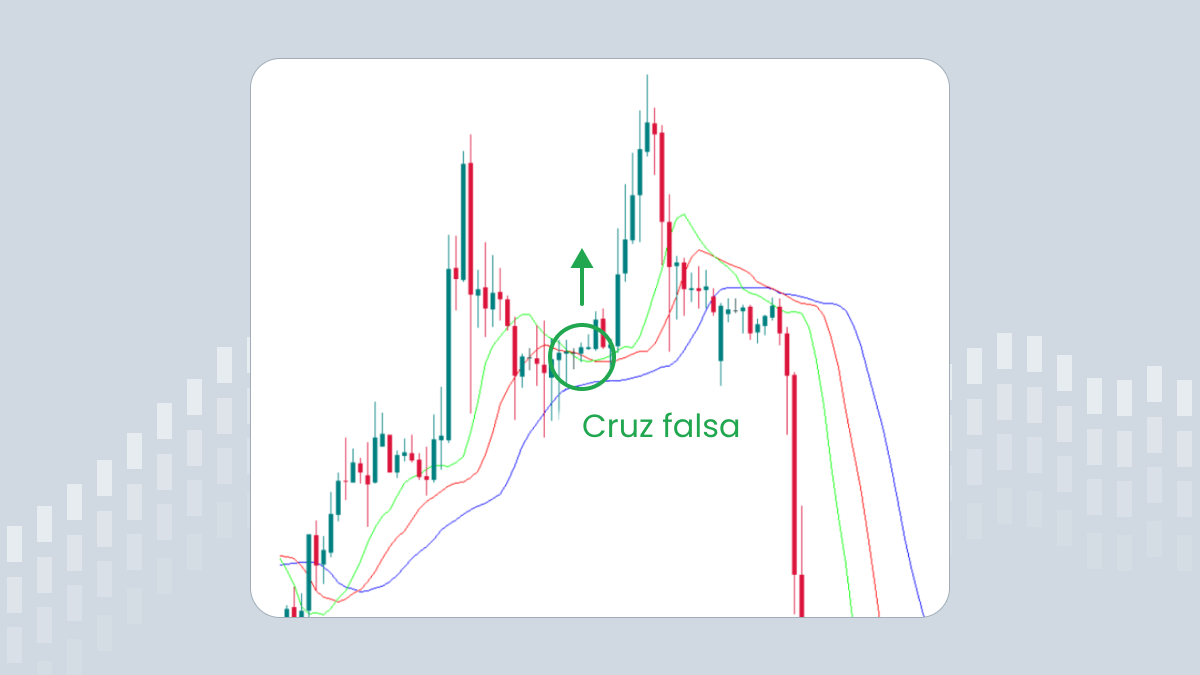
Combinando Alligator con otras herramientas
Puede haber muchas combinaciones diferentes entre Alligator y otras herramientas de análisis técnico. Aquí tenemos algunas sugerencias.
1. Busca un patrón de reversión (patrón gráfico o patrón de velas). Una vez que lo tengas, utiliza el Alligator para la confirmación (es decir, espera a que la línea verde cruce otras líneas).
2. Utiliza el Alligator en conjunto con los Fractales. Espera el momento en que el Alligator esté durmiendo (las Líneas de Balance están entrelazadas). Coloca una orden Buy Stop 1 pip por encima del último fractal bajista que se encuentra por encima de la boca del Alligator.
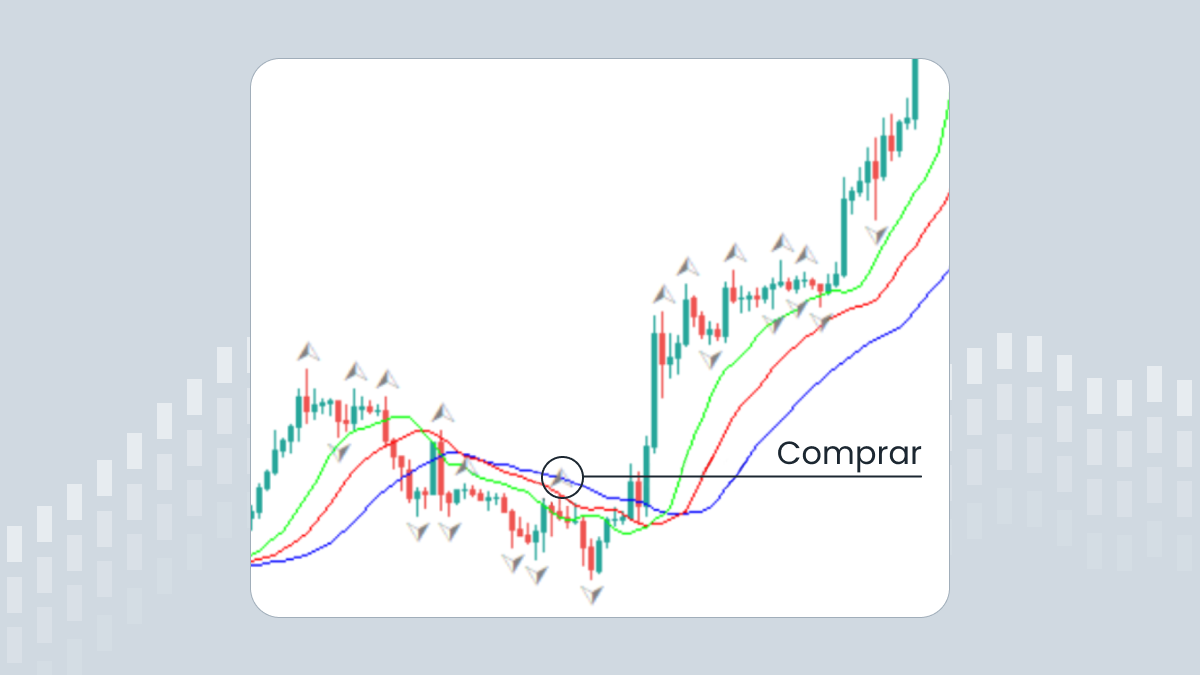
Conclusión
El indicador Alligator tiene una fórmula única que lo distingue de un set simple de Medias Móviles. Al estar basado en Medias Móviles, el indicador reacciona a los cambios de precio con un retraso de tiempo. Al mismo tiempo, puede ser utilizado tanto para seleccionar el inicio de una nueva tendencia como para el momento en que se reanuda una tendencia después de una corrección. El Alligator es un sistema de trading listo para usar que puede ir acompañado de otras herramientas analíticas para una mayor precisión del trading. Cuando utilices el Alligator, revisa varias temporalidades del gráfico.